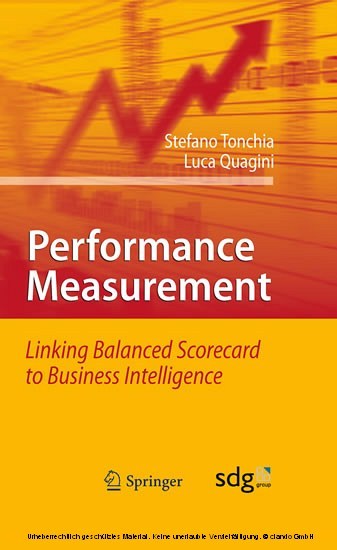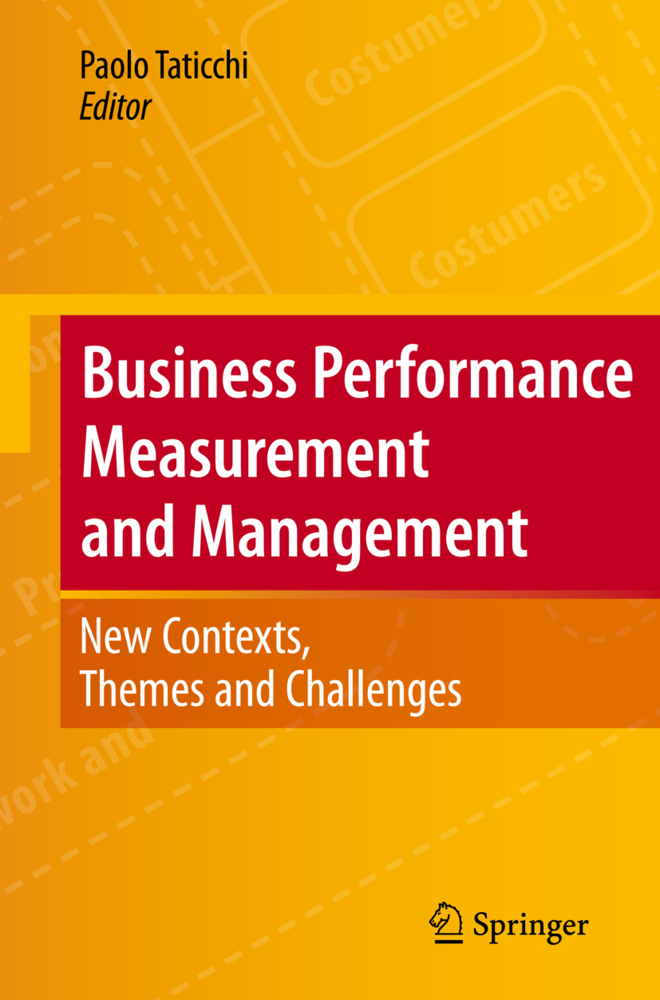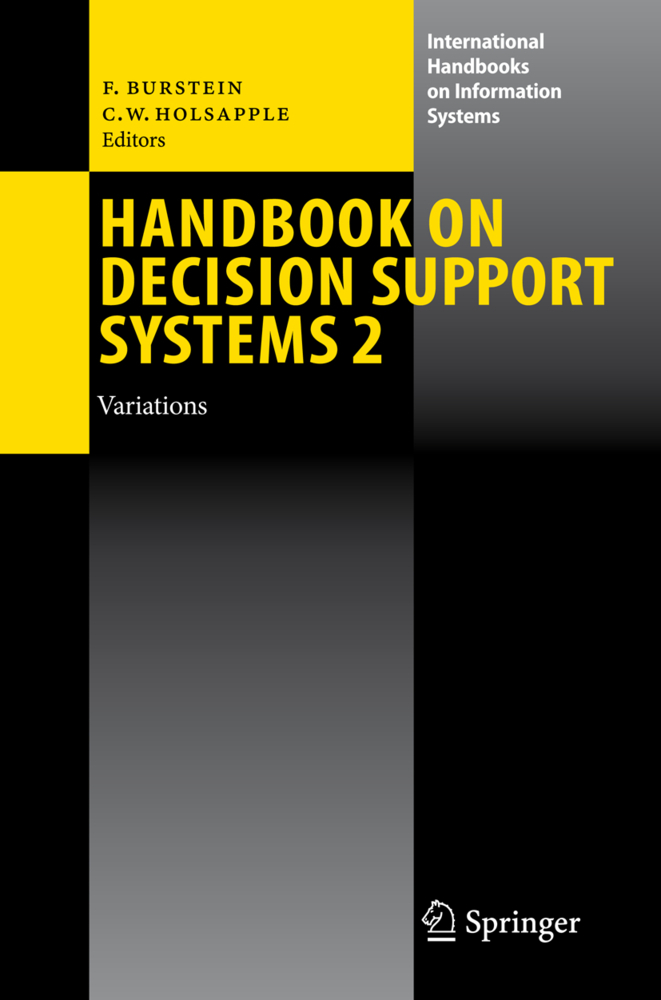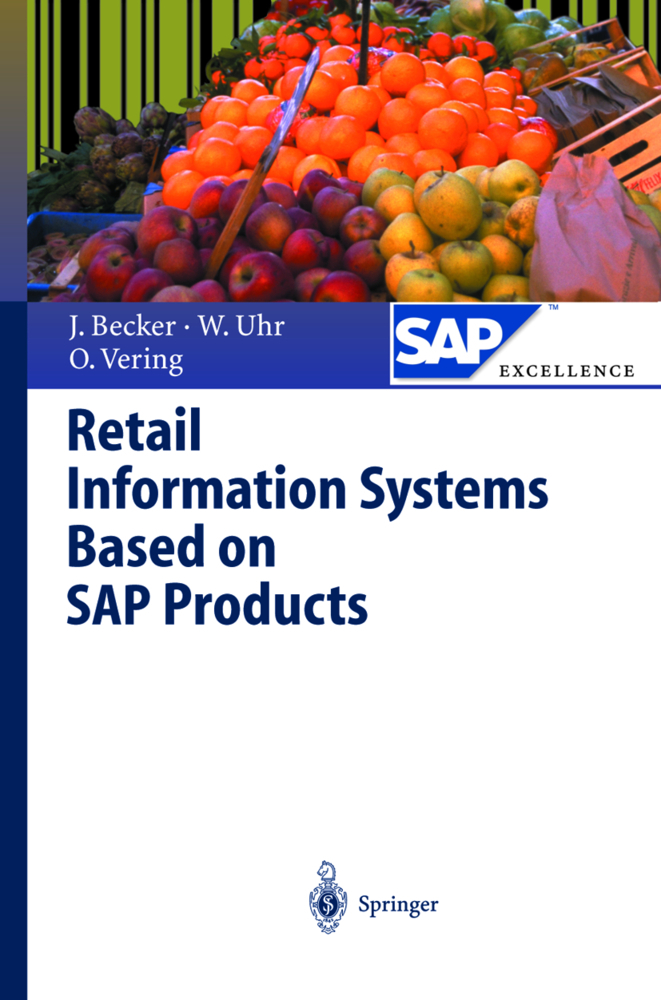Performance Measurement
Linking Balanced Scorecard to Business Intelligence
This book describes in a precise but practical way the most recent developments in performance measurement and the relative Performance Measurement Systems (PMS), whose most famous one is the Balanced Scorecard model.
1;Foreword;6 2;Contents;8 3;Introduction;12 4;Chapter 1: Performance Measurement and Indicators;16 4.1;1.1 Company Management and Performance Measurement;16 4.2;1.2 Operational Performances;18 4.3;1.3 Customer Satisfaction Measurement;20 5;Chapter 2: Cost and Productivity Performances;24 5.1;2.1 Innovation in the Accounting Systems;24 5.2;2.2 Balance Sheet Indicators and Corporate Value;25 5.3;2.3 Capital Budgeting: Investment Analysis and Evaluation;27 5.4;2.4 Cost Accounting;28 5.5;2.5 Relationship Between Cost Performance and Economic-Financial Results;30 5.6;2.6 Cost Performance Measurement;32 5.7;2.7 Efficiency and Productivity Performance Measurement;35 6;Chapter 3: Non-cost Performances;38 6.1;3.1 Total Quality Management and Quality Dimensions;38 6.2;3.2 Purchasing and Vendor Quality Rating;40 6.3;3.3 Engineering and Manufacturing Internal Quality;41 6.4;3.4 Quality Costs;43 6.5;3.5 Time Performances;44 6.6;3.6 The Flexibility Performance;47 7;Chapter 4: Performance Measurement Systems;50 7.1;4.1 What is PMS?;50 7.1.1;4.1.1 PMS Evolution;51 7.1.2;4.1.2 Dashboards - Balanced Scorecard;51 7.1.3;4.1.3 Business Intelligence Technology;52 7.1.4;4.1.4 Importance and purposes of the PMS;53 7.2;4.2 PMS Characteristics;54 7.2.1;4.2.1 Performance Indicators and Measures;54 7.2.2;4.2.2 Architecture;56 7.2.3;4.2.3 Interfaces;57 7.3;4.3 PMS Models;58 7.3.1;4.3.1 Vertical/Hierarchical and Truncated-Pyramid Models;59 7.3.2;4.3.2 Balanced Scorecard or Tableau de Bord Models;63 7.3.3;4.3.3 Value Chain and By-Process Models;70 8;Chapter 5: Design and Integration of the PMS;75 8.1;5.1 The Design/Implementation Process;75 8.2;5.2 PMS and Organization;79 8.3;5.3 Human Resource Evaluation;79 8.4;5.4 Measuring Intangible Assets;83 8.5;5.5 PMS and Strategy;87 8.6;5.6 Performance Improvement Projects;90 8.7;5.7 Future Research on PMS;91 9;Chapter 6: Performance Management: From Decision Support to Performance Governance;95 9.1;6.1 Main Components of CPM Frameworks;98 9.1.1;6.1.1 Planning and Forecasting;98 9.1.2;6.1.2 Balanced Scorecard and Dashboard;99 9.1.3;6.1.3 Profitability and Cost Management;99 9.1.4;6.1.4 Group Reporting and Financial Consolidation;99 9.2;6.2 CPM Softwares;100 9.2.1;6.2.1 Oracle Hyperion;101 9.2.2;6.2.2 SAP Business Objects;101 9.2.3;6.2.3 IBM Cognos;102 9.2.4;6.2.4 SAS;102 9.2.5;6.2.5 Microsoft;102 9.2.6;6.2.6 Board;103 9.2.7;6.2.7 Tagetik;103 9.3;6.3 CPM Project Enablers;103 9.3.1;6.3.1 Metrics Definition;104 9.3.2;6.3.2 Cause-Effect Maps and Relationships;104 9.3.3;6.3.3 Modeling Data Management;105 9.4;6.4 Key Roles;105 9.4.1;6.4.1 The Management Consultant;106 9.4.2;6.4.2 The Business Intelligence Expert;106 9.4.3;6.4.3 The Performance Management Architect;106 10;Chapter 7: Luxottica, a New ``Vision´´ for the Supply Chain;108 10.1;7.1 The Success of Luxottica;109 10.1.1;7.1.1 A Constantly Changing Scenario;109 10.1.2;7.1.2 The Needs of the Supply Chain;110 10.2;7.2 Operational Performance Management;111 10.2.1;7.2.1 OPM and the SCOR Model;111 10.2.2;7.2.2 Analysis and Approach;112 10.2.3;7.2.3 Critical Success Factors;113 10.3;7.3 Supply Chain Processes;115 10.3.1;7.3.1 Raw Material Logistics;115 10.3.2;7.3.2 Product Lifecycle;116 10.3.3;7.3.3 Finished Product Logistics;117 10.3.4;7.3.4 Quality;117 10.3.5;7.3.5 Planning;118 10.3.6;7.3.6 Purchasing;119 10.3.7;7.3.7 Product Development;119 10.4;7.4 From the Map to the OPM Solution;119 10.4.1;7.4.1 The Project Architecture;121 10.4.2;7.4.2 Conclusions;121 11;Chapter 8: The Monte dei Paschi di Siena ``Controlling Data Farm´´, the CPM of the Oldest Bank in the World;125 11.1;8.1 Performance in a Bank Group;126 11.1.1;8.1.1 CPM as an Organisational and Information Synthesis;126 11.1.2;8.1.2 Multi-management Integration of Information;127 11.1.3;8.1.3 The Design Guidelines;129 11.1.3.1;8.1.3.1 Standardisation Versus Customisation of the Analysis Models;129 11.1.3.2;8.1.3.2 ``Extended´´ CPM: Integrating Enterprise Data Management;130 11.1.3.3;8.1.3.3 Production Time/Data
| ISBN | 9783642132353 |
|---|---|
| Artikelnummer | 9783642132353 |
| Medientyp | E-Book - PDF |
| Auflage | 2. Aufl. |
| Copyrightjahr | 2010 |
| Verlag | Springer-Verlag |
| Umfang | 156 Seiten |
| Sprache | Englisch |
| Kopierschutz | Digitales Wasserzeichen |











